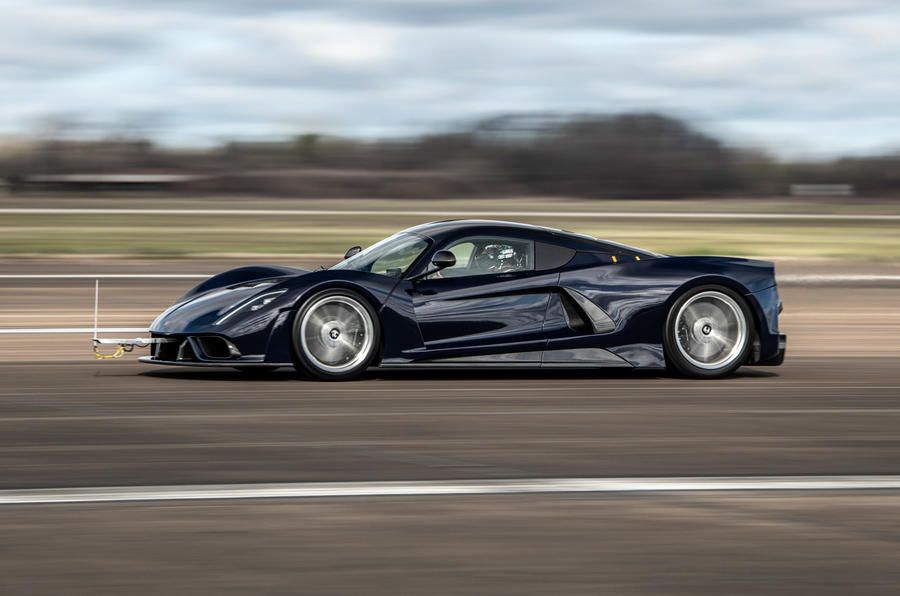American company Hennessey has released a new video (below) showing its Venom F5 hypercar being driven at full-throttle in the latest high-speed tests.
The V8 hypercar, which Hennessey hopes will ultimately break the 311mph production car speed record, was driven in its most potent 'F5' mode – which liberates the car's full 1817bhp output – for the purposes of high-speed stability testing. Previously, the 6.6-litre twin-turbo V8's output was capped at 888bhp.
According to company founder and CEO John Hennessey, almost all of the 24 examples of the Venom F5 slated for production have been sold.
The Venom F5 is Hennessey’s first fully bespoke hypercar. First previewed with a styling model in 2018, the carbonfibre-bodied coupé is differentiated from the ultra-low-volume Venom GT of 2011 by utilising an in-house platform instead of a heavily modified Lotus chassis.
Hennessey claims the combination of its colossal engine power and a 1360kg dry weight help make the one of the fastest road-legal cars in the world – possibly even the fastest. The company predicts a 2.6sec 0-62mph time, a 4.7sec 0-124mph time and an 8.4sec 0-186mph time.
Named after the highest rating on the Fujita hurricane strength scale, the F5 Venom uses a carbonfibre monocoque, built by KS Composites in the UK, that weighs just 86kg naked. A rear tubular aluminium subframe contains a 6.6-litre overhead-valve Fury V8 built by Hennessey in Texas with a cast-iron block, aluminium heads, forged connecting rods and pistons and a crank and camshaft made from billet-steel.
This is boosted by a pair of ball-bearing turbochargers with 3D-printed compressor housings that can deliver up to 1.58bar of boost.
In addition to the headline power figure, which is delivered at 8000rpm, Hennessey claims a torque peak of 1193lb ft, with at least 1000lb ft available from 2000rpm through to 8000rpm.































Join the debate
Add your comment
The Fujita Scale measures, or used to, tornados - not hurricanes. Hurricanes are measured by the Saffir-Simpson scale. Tornados are now officially measured by the Enhanced-Fujita scale.
Phenomenal!,
Yes, amazing in gear times, but, really, most are seen at Runway days where cars like these are V maxed , some never see a public road even, the price isn't that out there for cars like it, and I'm sure some of us would be quite happy with 250 BHP in a 1350kg car because, you could use it everyday, I know it's great to see, read about the advancement of car design.
There's a lot of work and engineering gone in to this, and i do respect that, but, meh. Pull your trousers up and put the tape measure away.